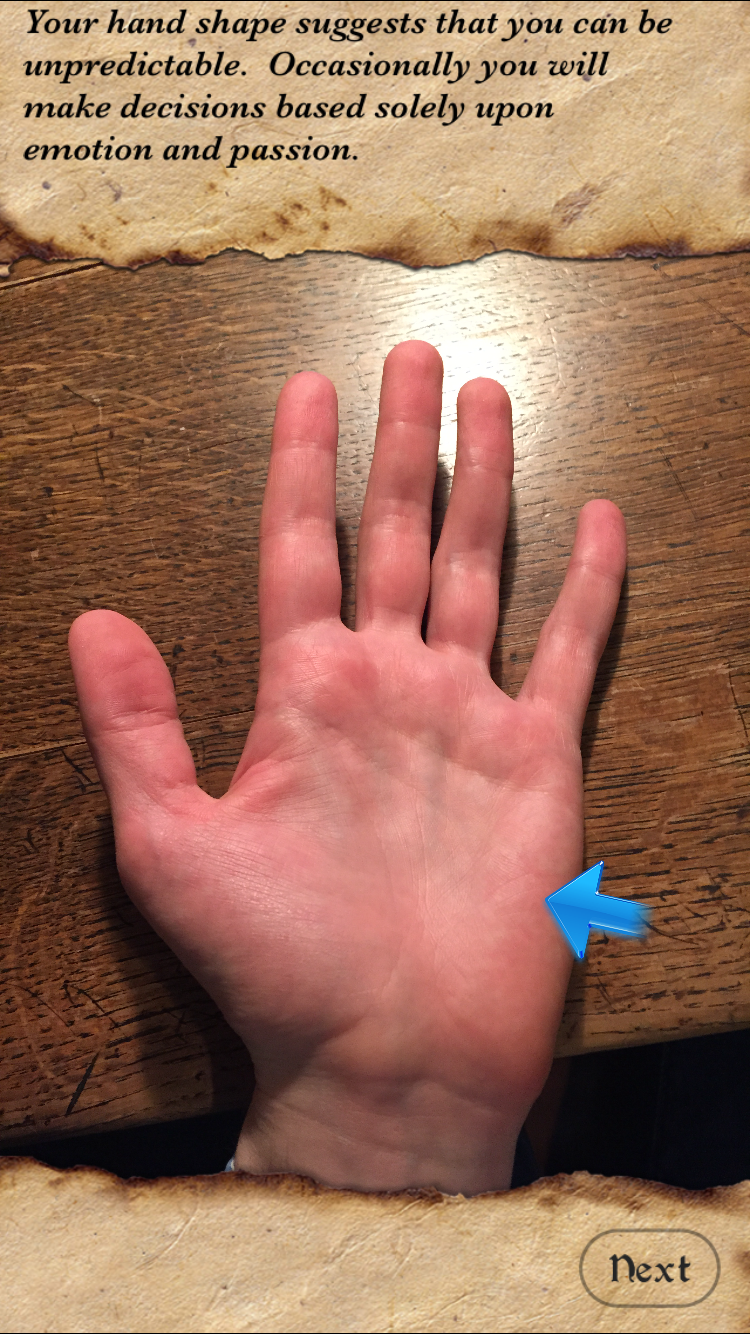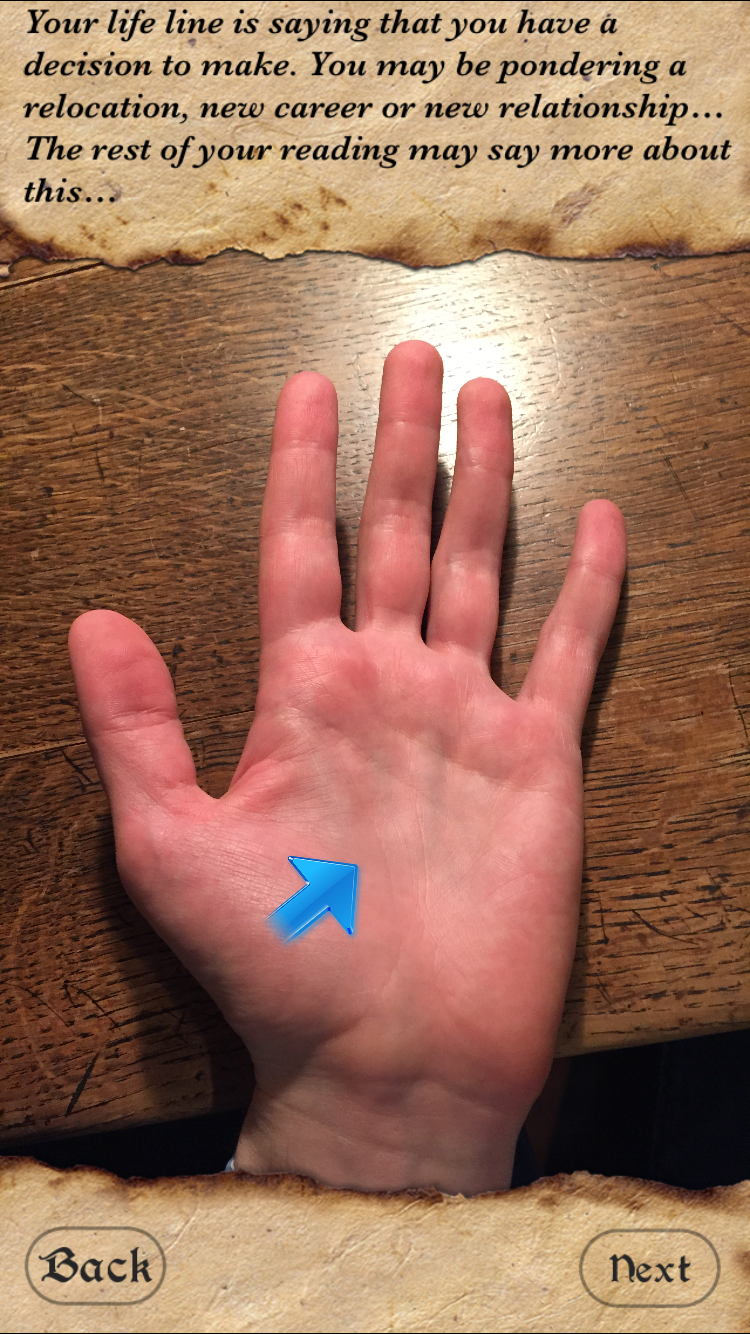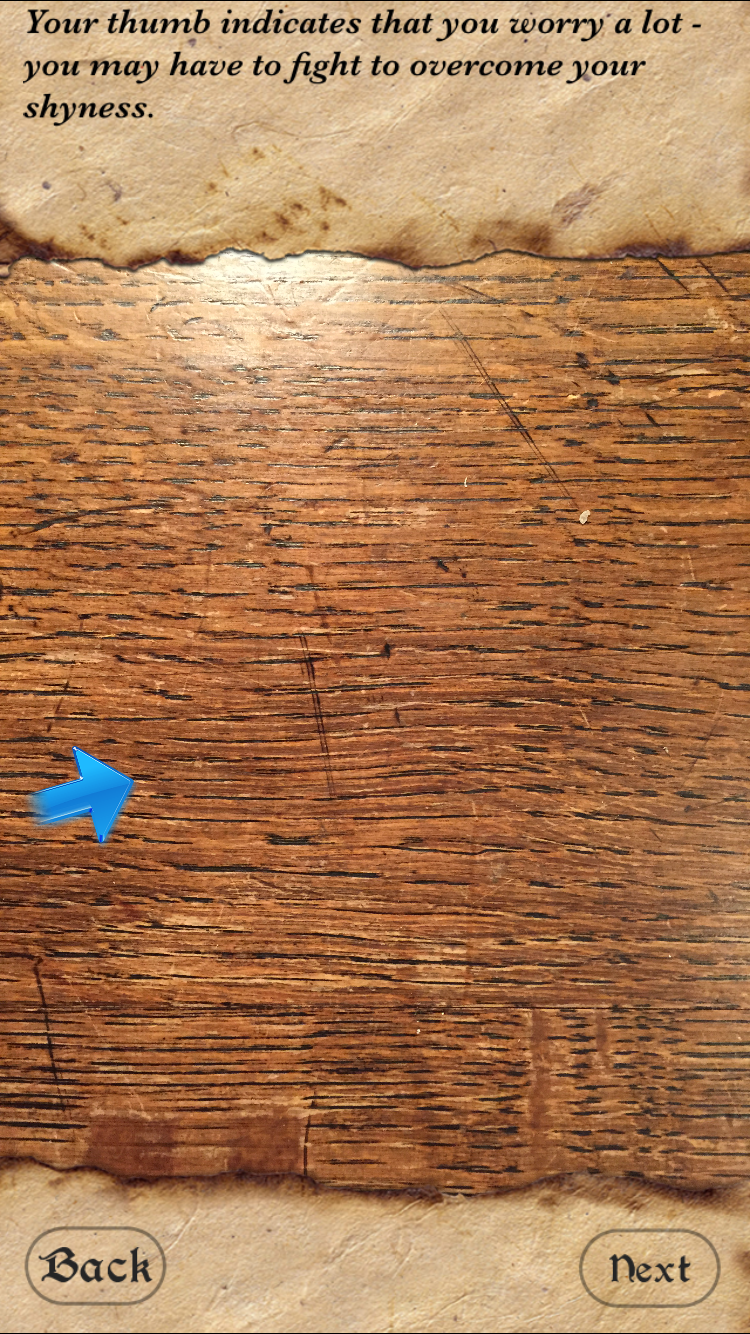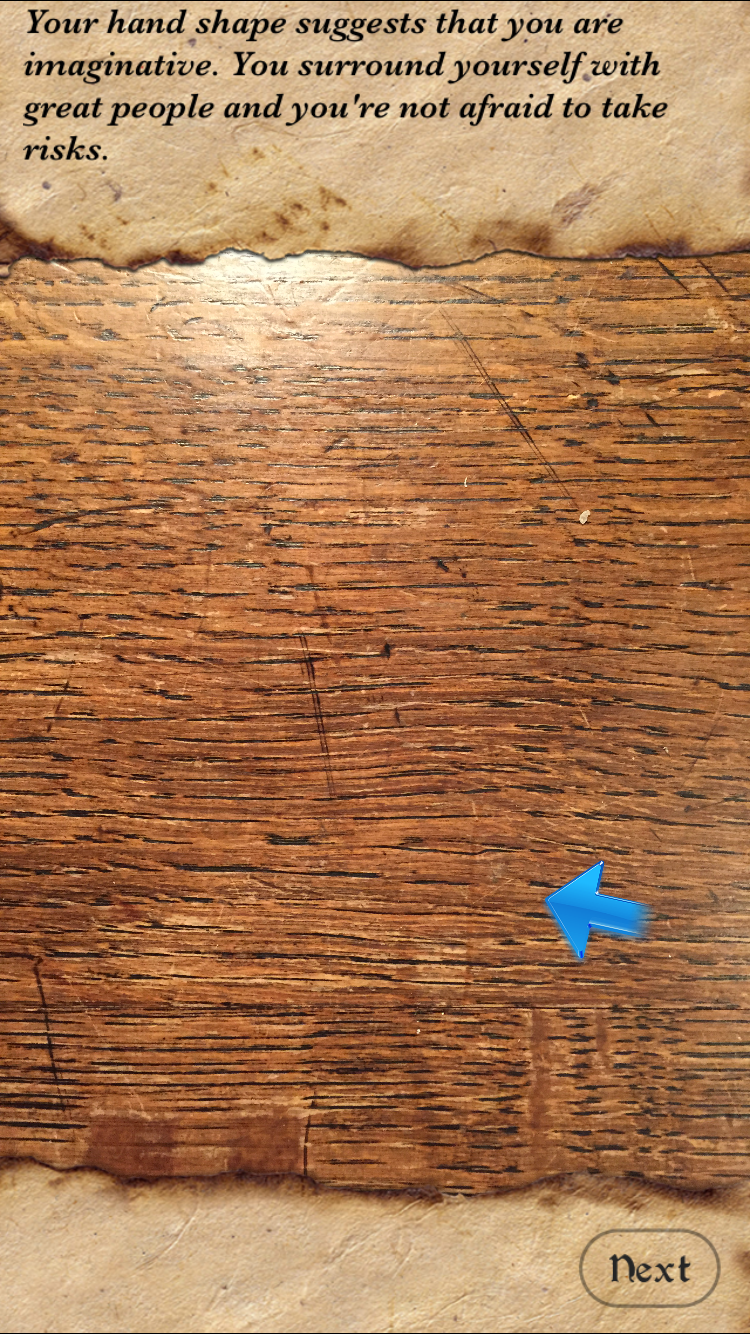It’s hard not to feel a twinge of respect for old school scam artists. There is something downright artisanal about the pickpocket, the confidence man, the card cheat, and the forger. Each is in possession of knowledge that cannot be learned in books, and skills that must be honed without a safety net. If you must be a criminal, you may as well have a little bit of old-world panache.
Without romanticizing the subject too much, here are a few recent discoveries.
THE MOBILE PALM READER
Palm reading has been around for centuries. In order to save money on my weekly readings, I recently downloaded a free app called Palm Reader. Here are the findings:
It is both upsetting and comforting to realize that while people have a great variety of interests and personality types, they all want to hear the same stories about themselves.
The app starts with a free reading, immediately hints that there is a “full reading” available, and then requires you to upgrade to the premium version. This conforms perfectly with what real life palm readers have been doing forever. The clairvoyant begins with a $5 reading just for fun. Then he or she offers to reveal more information about your future, or your past lives, during a longer and more expensive session. New technology, same basic idea: start small, hope to strike a chord, then manipulate the mark’s natural curiosity. What’s old is new. Also, my kitchen table:
CHANGE RAISING
Picture the following scenario. Try to follow the money.
It’s your first day as a cashier at a busy coffee shop. A well-dressed gentleman walks in, slaps a $10 bill on the counter, and buys a coffee for $1. You give him his change. Almost immediately, he brings out a bunch of $1 bills from his pocket and says he didn’t know he had so much change. He says, “Can I give you 10 singles and you give me my $10 bill back?” You give him the $10 bill back and he turns to walk away. HOWEVER, upon counting the 10 $1 bills, you realize that he in fact gave you 9 $1’s and 1 $10. Because you are a good person, you say, “Wait a minute, you gave me too much. You gave me a $10 bill instead of a $1 bill.” Looking perplexed, he checks the bills and says, “Oh sorry, why don’t I just give you another $1 bill and you give me a twenty.” You do this. Everything feels fair. BUT, he leaves with an extra $10 which, let’s imagine, he uses to buy toys for a needy child.
This is a classic small time scam. Did you catch the discrepancy? We’ve all had the experience of answering a word problem on a math test and falling for a solution that sounded right but wasn’t. That’s what this is. And it’s especially tough because the wrong answer is being fed to you quickly by the Oscar quality performance of a con man.
Once, while working at a coffee shop in high school, I got taken by a change raiser. It was a busy morning and the line was unusually long. I had already read about this scam; however, the change raiser got offended when I questioned his honesty. I didn’t want to risk being wrong and making a scene at a new job. As the manager had reminded us at least three times each day, “The customer is ALWAYS right.”
When this video popped up online, I was excited to see the mythical change raising scam in action. Plus, I figured it would finally win me the approval of my old boss. But instead, it’s something different and, given the complexity of what you’ve just read, quite amusing.
The beauty of the true change raise is how gently the con artist leads the cashier into a world of bad math. The steps makes sense, but they don’t add up. The men in this video, on the other hand, lack entirely in subtlety. But note how the man close to the register picks up the bill and draws the cashier’s attention to it. This is a classic principal of misdirection: before you can make somebody look away from an object, you must first draw his attention to it. Hopefully the cashier didn’t lose his job. Still, it’s hard not to admire people whose ideal payday is $100 and a bag full of sweets.
DOCUMENTS
Last but not least: the master forger. Whether it’s a phoney document or a Picasso, there’s undeniable skill involved in faking authenticity. This TED talk tells the story of Adolfo Kaminsky. Kaminsky began forging documents in order to help Jewish families escape from Nazi occupied France. In the decades that followed, he used his skills for other socially conscious forging projects. He always worked for free.
Check out the video HERE
Each of these finds offers a different lesson. The Palm Reading app proves that a good scam (like a good story or a good joke) is timeless and will evolve to fit new norms and new technology. The forger proves that you can be moral and nefarious at the same time. Scamming can even be heroic. As for the candy store thieves: there is a big difference between the classic change raise and what the two in the video are doing. This difference proves that even petty crime can be judged for its artistic merits or lack thereof. Finally, if anybody has any leads on the customer who ripped me off at the coffee shop way back when, please be in touch.










 Your Email Address is Safe With Conjuring Arts
Your Email Address is Safe With Conjuring Arts